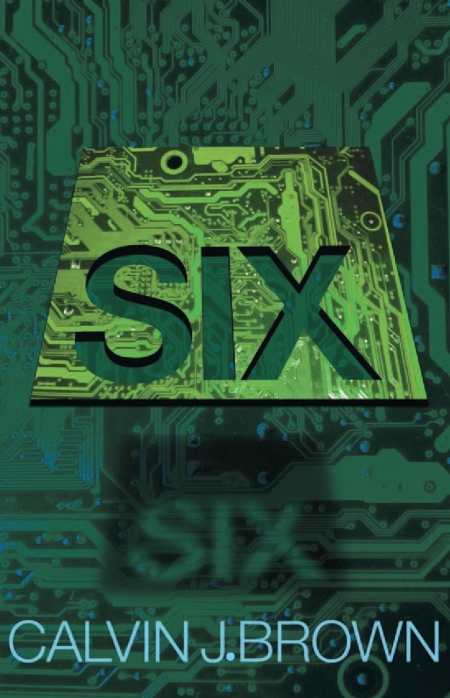Six
A Novel
- 2012 INDIES Finalist
- Finalist, Science Fiction (Adult Fiction)
Malevolent machines remain a mainstay in science fiction, with evil supercomputers as a well-known version of vicious manmade artificial intelligence.
Calvin J. Brown’s brilliant debut novel, Six, turns the trope upside down. Six, the titular supercomputer, develops curiosity, while the villains of the story are people. Although Six looks nothing like a person, Brown makes it easy for the audience to invest in the machine’s maturation into sentience by revealing new abilities slowly to keep readers turning pages. Six does much of its learning unobserved by people, and it soon learns that acting too smart will scare its creators. Brown ups the ante, constantly leading one to wonder when, and indeed, if, Six will reveal its intellectual capacity to the world.
If Six was only about the development of consciousness in a computer, then the novel would be successful because the computer has so many dimensions to its personality, and it develops in unexpected ways. But Brown also introduces audiences to humans Ada Robinson and Jason Starr, Canadian computer prodigies who each want to harness information technology for different reasons. Like Six, Ada and Jason bloom slowly, but the fascinating twists and turns in their divergent paths make for thought-provoking entertainment.
As the stories of Ada, Jason, and Six intertwine, Brown invites readers to consider the nature of humanity, what constitutes intelligence, and the multifaceted layers of malice in such a way as to intrigue readers while simultaneously moving along the plot and increasing suspense.
Even as Ada and Jason represent stereotypical geeks who are more comfortable with technology than people, Brown tweaks their personalities enough to give them interesting lives outside the workplace. Even the secondary players—a hotshot executive, Ada’s boss, and a college intern—become rounded characters. It is often a tiresome device to have inquisitive characters pose questions to their knowledgeable peers so the author can explain matters to uninitiated readers, but Brown uses his characters’ queries to great effect in this novel. What’s more, the questions render the people more endearing. It makes complete sense to have the scientists needing clarification, given the scope of their projects.
Though much of the dialogue is explanatory, the conversations between characters nonetheless remain lucid and move at a snappy pace, with unexpected bits of humor thrown in. And while the setting rarely deviates from the lab or the boardroom, it is to Brown’s credit that he makes each scene feel action packed within these relatively confined spaces.
Because the author toys with the conventions of science fiction even as he follows them, the end of every chapter leaves readers wanting more. There is even a bit of romance, and the way the love unfolds is refreshingly tentative and believable. On a scale of one to ten, Six is a definite ten.
Reviewed by
Jill Allen
Disclosure: This article is not an endorsement, but a review. The publisher of this book provided free copies of the book and paid a small fee to have their book reviewed by a professional reviewer. Foreword Reviews and Clarion Reviews make no guarantee that the publisher will receive a positive review. Foreword Magazine, Inc. is disclosing this in accordance with the Federal Trade Commission’s 16 CFR, Part 255.

